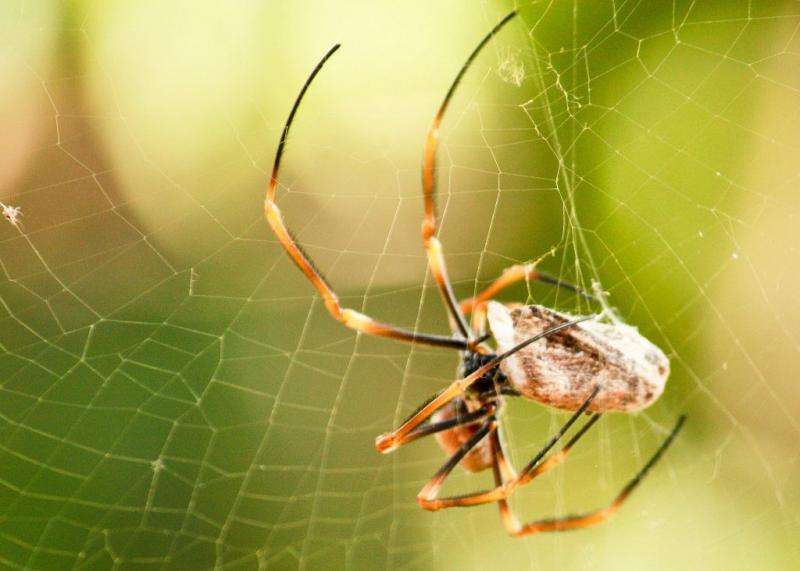Credit: Daniela Parra (Flickr)
Macquarie University academics have discovered the way the spiders apply glue to silk threads, not the amount, makes the attachment to an object stronger.
In the new study published in Proceedings of the Royal Society B, Dr Jonas Wolff, Macquarie University Research Fellow in the Department of Biological Sciences, and his team sought to understand the link between how a spider applies threading glue when attaching a web to a surface (such as a leaf), and the strength of that web attachment.
"Like printers, spiders print glue onto a surface in a specific pattern. We found that different species spin different patterns, and it is these patterns which determine how strong the anchorages – or connection points – are," said Dr Wolff.
To learn about these distinct spinning patterns, Wolff and his team collected Golden Orb-weaving and Huntsman spiders and filmed their movement patterns during spinning. The team also collected samples of the spiders' silk on stiff polypropylene film and tested for comparable pull-off resistance.
"We tend to assume a web is stronger if spiders apply more glue. Instead, we've discovered that it is the way the glue is applied, not the amount, that makes the attachment stronger," added Dr Wolff.
"These findings contribute immensely to our understanding of the evolution of spider webs, because it shows that spiders had to adapt how they apply the glue to gain strong, resistant webs in an aerial space."
Wolff hopes this and future research can eventually be used in a range of practical settings.
"Spiders can attach a web to anything in seconds – their attachment is quick, effective and doesn't damage the surface. Understanding how spiders do this could help us in many ways," added Dr Wolff.
"For example, for industries that use specialised and expensive adhesives like construction, medicine and manufacturing, finding ways to improve bondings or use glue more efficiently could have great economic benefits.
"We also hope to figure out how to use these findings to develop micro three dimensional printing or bioinspired smart glue application techniques in the near future."
More information: Jonas O. Wolff et al. Distinct spinning patterns gain differentiated loading tolerance of silk thread anchorages in spiders with different ecology, Proceedings of the Royal Society B: Biological Sciences (2017). DOI: 10.1098/rspb.2017.1124
Journal information: Proceedings of the Royal Society B
Provided by Macquarie University
























